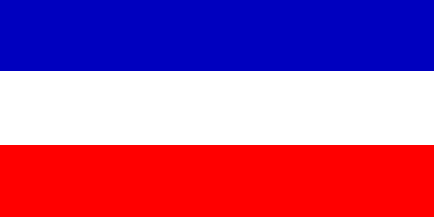





There are four known Chemical Warfare facilities operating in the former Yugoslavia, specifically in Serbia. The four known facilities currently involved in the research, production, and storage of chemical warfare agents in the Serbia are: Prva Iskra in Baric, Serbia; Miloje Blagojevic in Lucani, near Casak, Serbia; Milojie Zakic and Merima in Krusevac, Serbia; and the Military Technical Institute in Potoci near Mostar, Bosnia and Herzegovina. The equipment in the Military Technical Institute in Potoci was disassembled by Serb troops in February 1992 and moved to the Lucani facility in Serbia. The facility in Lucani is, until the initiation of hostilities thought to have been producing sarin. In addition, the JNA (Former Yugoslav Army until the breakup in 1991) and the VJ (current Yugoslav Army) has worked with Iraqi specialists on CW since 1989.
This raises the concern as yet unreported in the press that Milosevic may be planning to use or threatening to use, as a last resort, chemical weapons in Kosovo or in greater Serbia, especially if NATO ground troops enter the conflict. Considering that Milosevic has a well-established history of genocide and other crimes against humanity, chemical warfare may be Yugoslavia's weapon of mass destruction may be the only "trump card" to even the odds in an asymmetrical ground war with NATO. The VJ and its predecessor the Yugoslav Peoples Army (YPA) also had an extensive and sophisticated chemical weapons program prior to the breakup of Yugoslavia. The army of the Federal Republic of Yugoslavia (Serbia and Montenegro) inherited much of this program and that stockpiles and offensive and defensive military doctrine exist for its use potentially during the current crisis. Before the dissolution of Yugoslavia in 1991, the JNA's chemical weapons program produced the numerous chemical warfare agents to include sarin, sulfur mustard, the psycho chemical incapacitant BZ and CS. They also weaponized these agents in plants in Lucani, Baric and in Krusevac. The VJ has produced sarin and made it into a weapon (app 50 tons) at the Lucani Facility, and produced smaller quantities of tabun, soman and VX nerve agents (app 50 tons combined) at the facility in Krusevac. In addition the VJ forces are thought to have large quantities (app 400 tons) of sulfur mustard and produced smaller amounts of nitrogen mustard and lewsite (app 30 tons). The VJ is thought to have stored at the Krusevac facility approximately 15 tons of phosgene. The development of chemical agents and weapons in the former Yugoslavia began in the late 1960s. This program did not become overtly offensive until the late 1970s when the JNA developed the offensive doctrine for the use of BZ which was incorporated in a classified manual published in 1981. Further experimentation, development and testing continued during the 1980s, and by the time of the dissolution of the Socialist Republic of Yugoslavia, the JNA apparently had developed and produced 122mm, 152mm, and 155mm artillery shells; air-delivered bombs (of an unknown type); 122mm, 128mm rockets, and 262mm rockets; and chemical warfare mines. There are unconfirmed reports that the JA has binary sarin munitions fir use with 155mm artillery shells. According to a public document, "Yugoslav Army Involvement With Chemical Weapons," prepared by the Yugoslav Federal President's office in September 1991, thousand of rockets for the 262mm multiple rocket launcher system, were produced with chemical weapons warheads filled with phosgene and BZ. In the same document, the Yugoslav Federal President's office also claimed that several thousands of these rockets - it is not indicated what type - were shipped to Iraq in 1989-90. Manufacturing slowed after the dissolution of Yugoslavia but stockpiles which are in control of the VJ have remained viable and have not been destroyed. The JNA also, produced hand grenades, rifle-propelled grenades, mortar shells, and possibly also artillery shells and 128mm rockets filled with irritants CS and CN. The production of CS- and CN- filled grenades continued at least until 1993. According to Serbian Army manuals, the chemical incapacitant BZ was put into hand grandes. The principal storage facility for these weapons is thought to be in Lucani.In April 2000 Yugoslavia became the 134th nation -- and the last in Europe -- to agree to adhere to the convention banning chemical weapon. This requires Yugoslavia to renounce production, stockpiling or use of chemical weapons and report those chemicals that can be used for military as well as peaceful goals.
